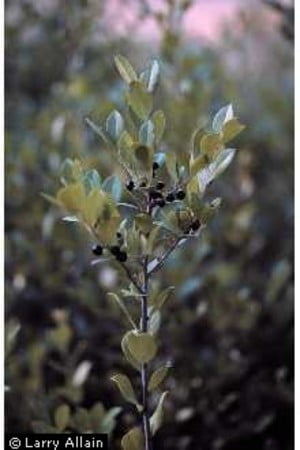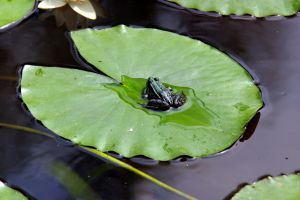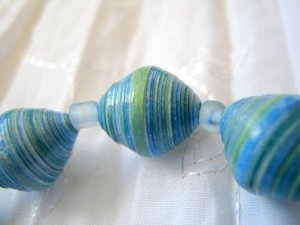Inkberry, no it’s not a type of stamp ink but rather a wonderful bush that birds just love to feast off from in winter. Otherwise known as Appalachian tea, Evergreen Winterberry and/or Gallberry is native to the East and the South Central parts of the United States. It is best used as a medium-sized ornamental shrub in any garden. It gets its name from the green berries that turn black when mature. The scientific name refers to ‘Ilex’ Oak native to the Mediterranean and ‘glabra’ means smooth leaf surface.
Part of the holly family, this shrub is terrific to add to any garden to add character and to provide food in the winter to birds. The birds that especially like to feast on this bush are robins, mockingbirds, and doves; in addition, it also attracts brave white-tailed deer. It creates a great hedgerow when it matures. At the moment it matures it can grow to around eight feet wide and eight feet in height, but that can take around twenty years. Therefore, it is considered a slow-growth evergreen that would be perfect for just about any location. The height can be controlled through yearly pruning without too much damage to the appearance of the shrub.
When choosing a location that is perfect for this shrub, be sure that the soil is slightly on the alkaline side. The pH levels should be around 4.5 to 7 to have success with growth. Since the roots will only reach around sixteen inches into the ground, this plant can be placed near a location with pine trees. The pine trees will allow the area to be partly shady (which is prefers) while giving enough alkaline levels that it prefers to live in while not disturbing each other. In addition, it prefers to have wet or moist locations, so a shady location is perfect. If you only have a full sun location, just try to water it every few days during the summer months.
In the late spring, little white flowers will bloom much like other holly bushes. Then, in fall and throughout winter, the berries will bloom as a constant food supply for birds and those brave deer around the planting location. Since it is a dioecious shrub, both a male and female species will need to be planted at least six feet apart to have berries grow. It is perfect for zones between four and nine.
The best part of having this shrub in your yard is that it is a part of the evergreen holly family. Therefore, if cared for properly, each plant will hold its light green leaves throughout the whole winter (even states that get snow). They do not require winter covering to last throughout the winter. It is a nice addition to have in the garden to add a little color in those wintry months! During heavy winter storms though, the shrub may need to be shaken off a little so the limbs are not bent.
So, although this hedge shrub is slow growing, it is much faster than the popular boxwood varieties that are commonly used in gardens. I would suggest this shrub instead of the boxwood and the Japanese Holly (which can not handle cold months). It provides wonder green foliage throughout all the seasons and can be quite the show when birds start fighting over the berries in the winter. They are prefect for any garden!





